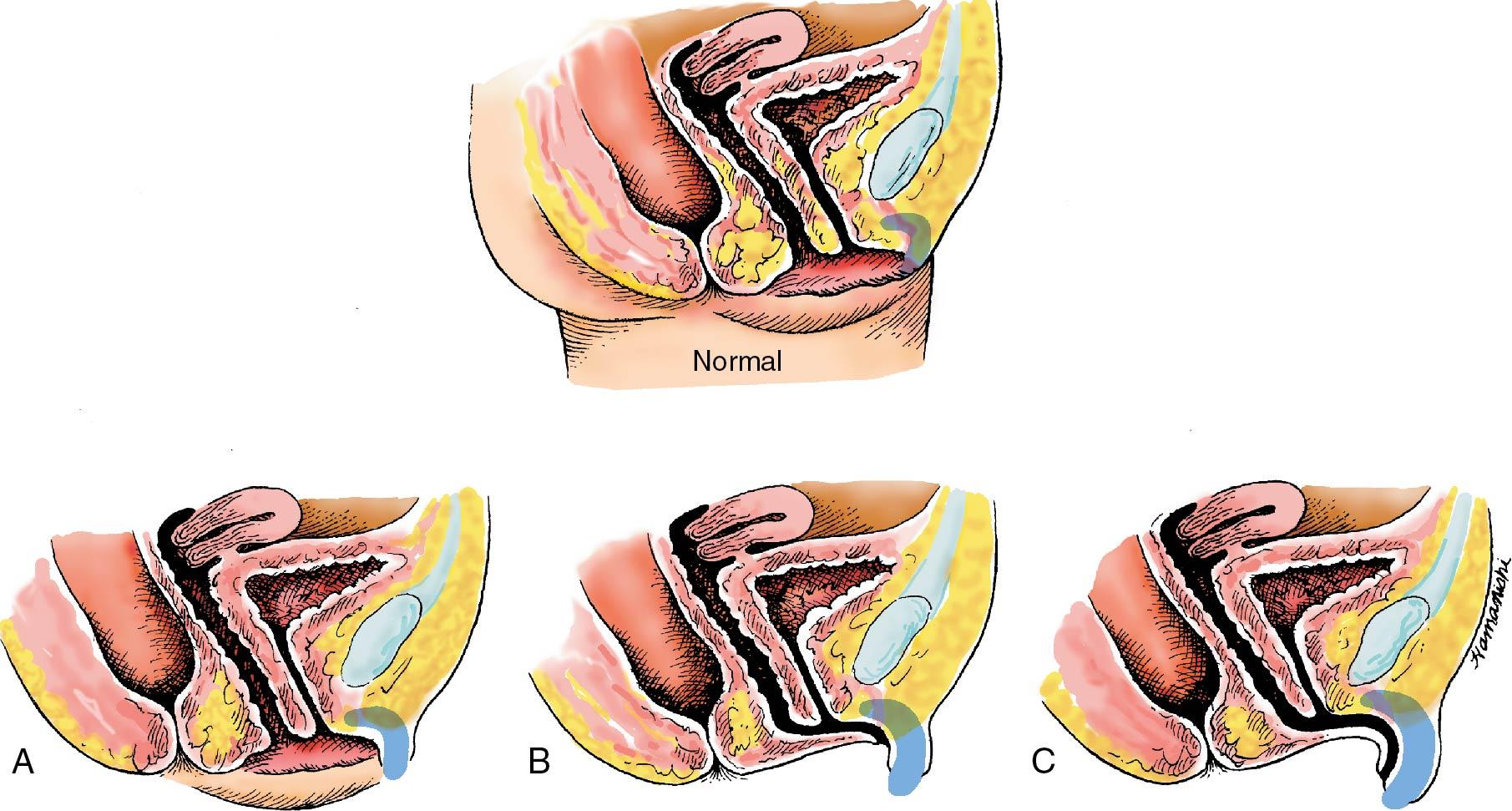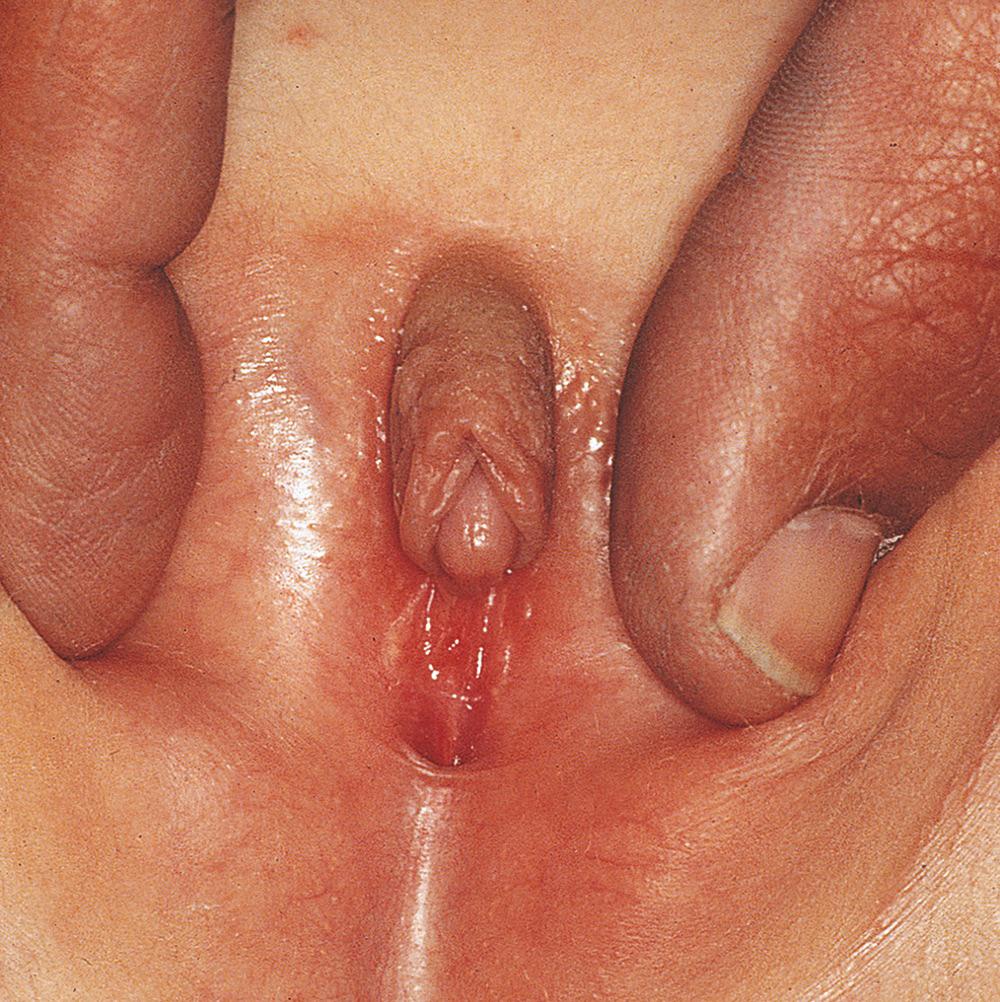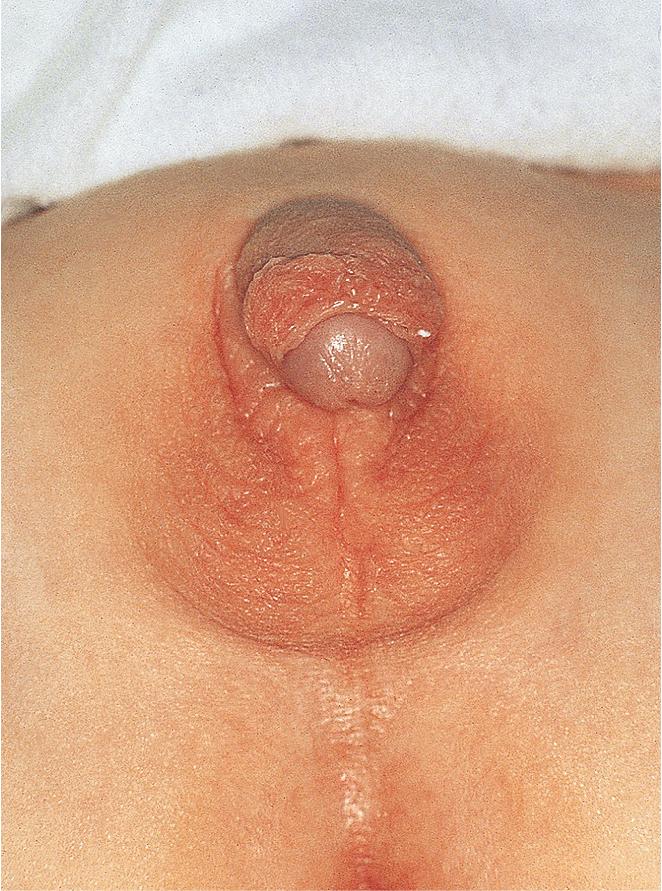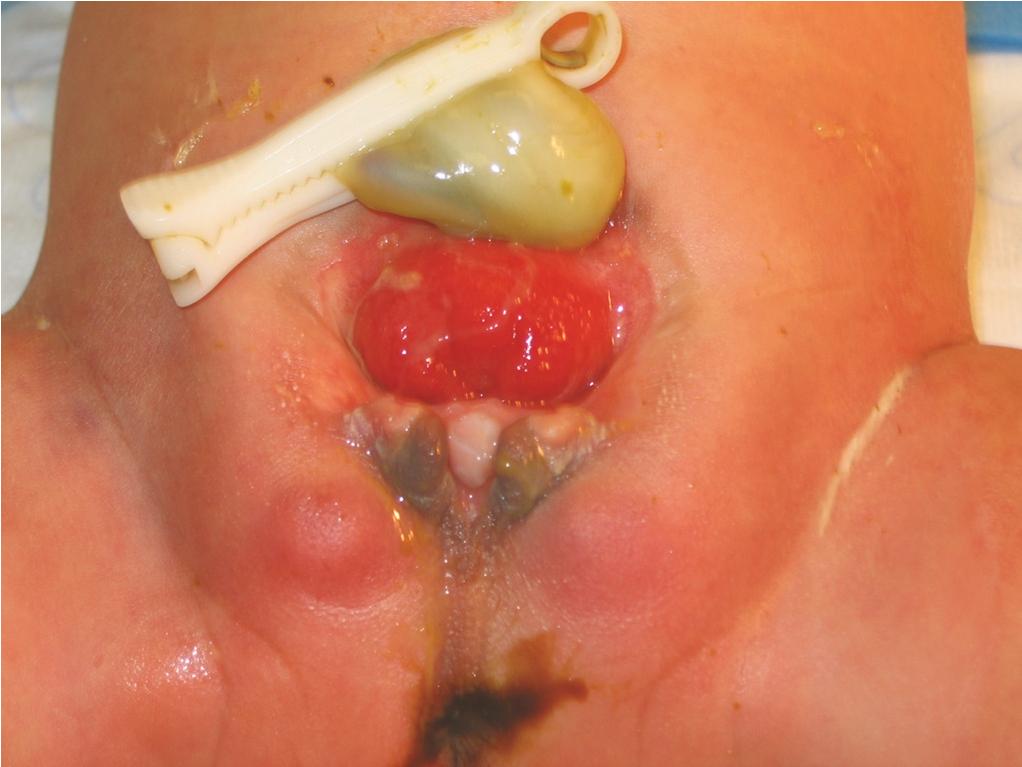Physical Address
304 North Cardinal St.
Dorchester Center, MA 02124
Gender identification in a newborn infant has emotional and psychological implications and should be performed as accurately as possible. However, in the setting of ambiguous genitalia, gender assignment should not be considered without definitive testing and multidisciplinary participation.
Congenital adrenal hyperplasia is an autosomal recessive condition, most commonly the result of an inborn error of metabolism involving the enzyme 21-hydroxylase. Homozygous individuals account for 1 of every 490 to 67,000 births, averaging 1 in 14,000, and are at risk of moderate to severe manifestations. Approximately 1 in 20 to 1 in 250 individuals are heterozygotes (carriers), and they can have a more mild presentation. Differences in incidence depend on the ethnic background of the population tested.
Vaginal agenesis is most often associated with Mayer-Rokitansky-Küster-Hauser syndrome, also known as müllerian agenesis. Up to 50% of these women have urologic abnormalities, and approximately one in eight have skeletal abnormalities as well.
Approximately 15% of women with a history of first-trimester recurrent miscarriage and 25% of those with a second-trimester miscarriage may have a uterine anomaly.
The uterine septum is the only uterine anomaly that can be easily corrected with a surgical procedure. In women with poor reproductive outcomes, surgery can normalize their chances of miscarriage and live birth.
Congenital abnormalities of the female reproductive tract are common and can affect the external genitalia and müllerian structures. These abnormalities can be caused by genetic errors or by teratogenic events during embryonic development . Minor abnormalities may be of little consequence, but major abnormalities may lead to severe impairment of menstrual and reproductive functions and can be associated with anomalies of the urinary tract. This chapter reviews a number of such abnormalities and discusses diagnosis and treatment. Anomalies can present at varying times in a woman’s life—at birth, before puberty, with the onset of menses, and during a pregnancy with adverse pregnancy outcomes—but many women with congenital anomalies of the reproductive tract are asymptomatic . Based on large studies, the incidence of müllerian anomalies is considered to be 1% to 3% ( ), and the prevalence of uterine anomalies is suggested to be 5% to 8% ( ). Because of the profound psychological effects such abnormalities can have, the gynecologist must approach the problems of genital and müllerian anomalies with sensitivity and an understanding of the effects on the woman and her family. Most tertiary centers have a diverse multidisciplinary team available for the evaluation, treatment, and support of the patient with a serious disorder of sexual development.
After delivery, the obstetrician is often the provider who identifies the gender of the neonate. Thereafter, a more detailed assessment of the neonate’s genital anatomy is necessary. The physician should systematically observe the newborn’s perineum, beginning with the mons pubis. The clitoris should be examined for any obvious enlargement, the opening of the urethra should be identified, and the labia should be gently separated to see if the introitus can be visualized. If it is possible to separate the labia, the hymen might be observed. Generally the hymen is perforate, revealing the entrance to the vagina. At times the labia are joined by filmy adhesions, which usually separate during childhood but can be treated with the application of estrogen cream when medically indicated. Posteriorly the labia fuse in the midline at the posterior fourchette of the perineum. Posterior to the perineal body the rectum can be visualized, and it should be tested to be sure that it is perforate. Meconium staining around the rectum is evidence of perforation. If there is doubt, the rectum may be penetrated with a moistened cotton-tipped swab. Palpation of the inguinal area and labia for any masses is also important.
In newborns with ambiguous genitalia, a range of abnormalities involving the clitoris, urethra, labia, and introitus can be identified, and immediate evaluation is necessary. The current diagnostic terminology for individuals with abnormal external genitalia and associated issues is disorder of sexual development (DSD), and these disorders can be related to in utero androgen exposure (too much or too little) that has affected development of the external genitalia. Women (individuals with XX karyotypes) with masculinized or virilized external genitalia are identified as 46,XX DSD, and men (with 46,XY karyotypes) with undervirilized external genitalia are identified as 46,XY DSD ( ). For women, the timing of antenatal (embryonic) exposure to androgen influences the degree of masculinization ( Fig. 11.1 ) ( ). The vaginal plate separates from the urogenital sinus at about 12 weeks of fetal development. Androgen exposure before 12 weeks can result in labioscrotal fusion and retention of the urogenital sinus , which creates a single tract that the urethra and vagina empty into before reaching the perineum. Androgen exposure after 12 weeks primarily presents with clitoral hypertrophy ( ).

The finding of ambiguous genitalia occurs in a wide spectrum of possibilities, from labioscrotal fusion and an enlarged clitoris with a penile urethra to a urogenital sinus to clitoromegaly and a normal introitus. With labial fusion, the physician should palpate the groins and labial folds for evidence of gonads. Gonads palpable in the inguinal canal, labioinguinal region, or labioscrotal folds are usually testes, and this finding is typically seen in a male with ambiguous genitalia rather than a virilized woman. Conversely, an infant with ambiguous genitalia but without palpable testes in the scrotum is more likely to be a virilized woman, most often the result of congenital adrenal hyperplasia. A rectal examination may allow palpation of a cervix and uterus, thus helping with gender assignment. If a bifid clitoris and labial fusion are noted, this anomaly is usually associated with extrophy of the bladder. As with any congenital anomaly, the neonate should be thoroughly evaluated for other congenital anomalies.
The initial evaluation of ambiguous genitalia involves checking a karyotype, performing a transabdominal pelvic ultrasound to assess pelvic anatomy, and obtaining blood for serum electrolytes and steroid hormone levels . In a female neonate an ultrasound can easily identify a uterus because the estrogenized tissue is easy to visualize. If further evaluation of neonatal pelvic anatomy is necessary, cystoscopy and vaginoscopy can be performed with a pediatric cystoscope to assess the pelvic structures, including the location of the urethra and vagina and the presence of a cervix. Possible causes of 46,XX DSD include congenital adrenal hyperplasia, other genetic mutations that affect the steroid pathway, maternal ingestion of androgens, and maternal production of excess androgens ( Box 11.1 ) ( ).
Congenital adrenal hyperplasia
Virilism only, defective adrenal 21-hydroxylation (CYP21)
Virilism with salt-losing syndrome, defective adrenal 21-hydroxylation (CYP21)
Virilism with hypertension, defective adrenal 11β-hydroxylation (CYP11B1)
Virilism with adrenal insufficiency, deficient 3β-HSD 2 (HSD3B 2)
P450 aromatase (CYP19) deficiency
Glucocorticoid receptor gene mutation
Iatrogenic
Testosterone and related steroids
Certain synthetic oral progestogens and, rarely, diethylstilbestrol
Virilizing ovarian or adrenal tumor
Virilizing luteoma of pregnancy
Congenital virilizing adrenal hyperplasia in mother *
* In pregnant patient whose disease is poorly controlled or who is noncompliant, especially during the first trimester.
Virilizing luteoma of pregnancy
It is important to systematically evaluate the newborn’s genitalia to make the appropriate gender assignment when possible. In the past, gender was assigned primarily on the principle of “phallic adequacy,” meaning neonates with an ambiguous phallus were assigned female gender. In contrast, the current approach is to initiate a thorough evaluation of the neonate and to defer gender assignment until the clinical picture is clear . Most tertiary centers use a multidisciplinary team for the evaluation and management of an individual with DSD, including specialists in medical genetics, pediatric urology, pediatric endocrinology, gynecology, and psychiatry ( ).
In an adult woman the clitoris is generally 1 to 1.5 cm long and 0.5 cm wide in the nonerect state. The glans is partially covered by a hood of skin, and the urethra opens near the base of the clitoris. Abnormalities of the clitoris are unusual, although it may be enlarged as a result of androgen stimulation. In such circumstances the shaft of the clitoris may be quite enlarged and partial development of a penile urethra may have occurred ( Fig. 11.2 ) ( ). Extreme cases of androgen stimulation are generally associated with fusion of the labia. These findings occur in infants with congenital adrenal hyperplasia and in those with in utero exposure to exogenous or endogenous androgens ( Fig. 11.3 ) ( ). Similar in appearance to infants with congenital adrenal hyperplasia, men with partial androgen insensitivity syndrome have underdeveloped male external genitalia and a small phallus that appears as clitoral hypertrophy ( Fig. 11.4 ) ( ).



A bifid clitoris ( Fig. 11.5 ) is usually seen in association with extrophy of the bladder, which occurs rarely (1 per 30,000 births) and has a male predominance (3:1). However, when it occurs in women, it is often associated with a bifid clitoris. Approximately half of female patients with bladder extrophy may have associated reproductive tract anomalies such as vaginal anomalies and müllerian duct fusion disorders. In such cases an anterior rotation and a shortening of the vagina with labial fusion are quite common.

Become a Clinical Tree membership for Full access and enjoy Unlimited articles
If you are a member. Log in here